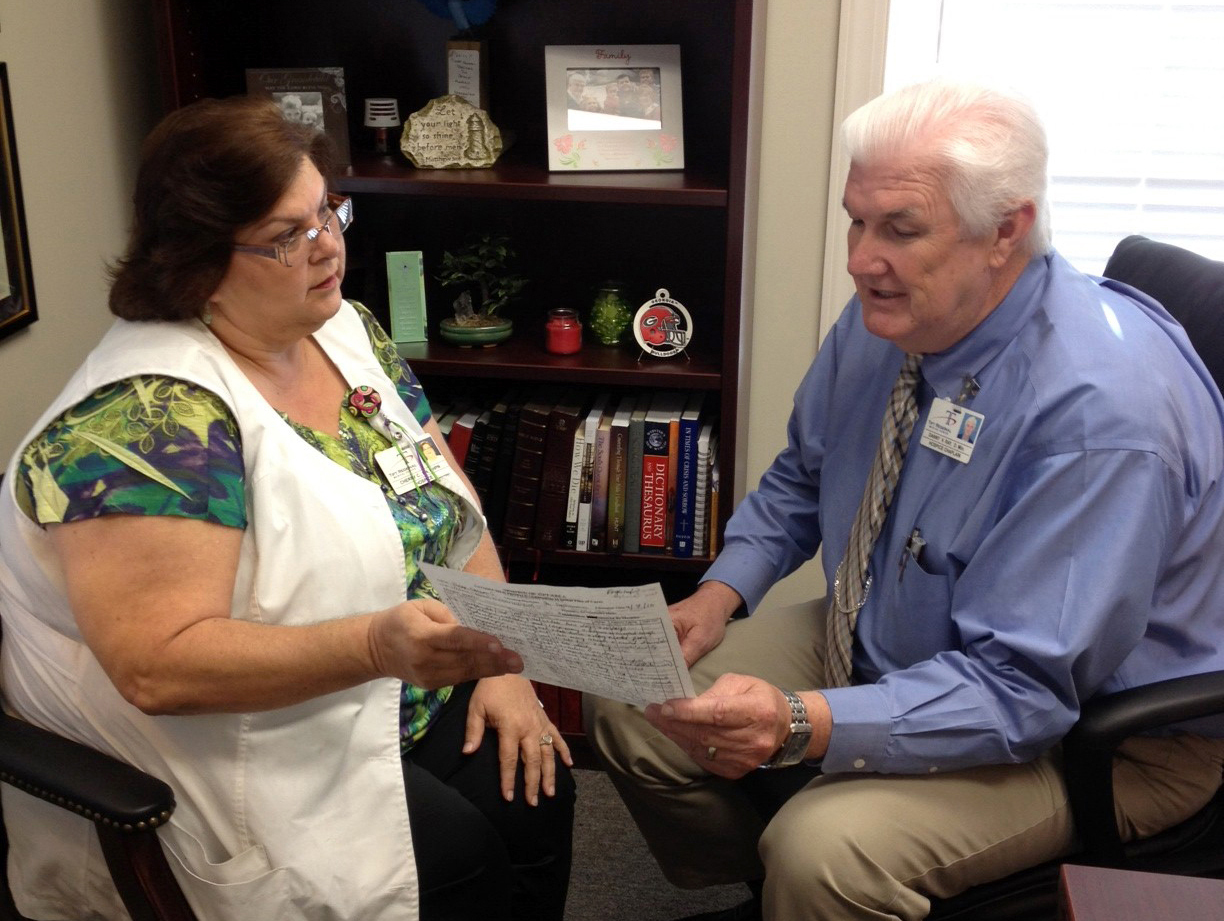
TIFTON, Ga. (BP) — Behind the wheel of his red Ford pickup truck, Danny Ray drives a nine-county circuit — always trailing terminal illness, inevitable death and heartache. Ray’s ministry as a hospice chaplain is not one for the faint of heart or the weak of spirit.
Ray is one of 3,650 chaplains endorsed by the North American Mission Board. While some 1,500 of them serve in the U.S. military around the world, NAMB has more than 70 kinds of chaplains also serving in prisons, law enforcement, corporations and, in the case of Ray, healthcare.
But other than military chaplains on the battlefields who encounter death and horrific injuries on a daily basis, no chaplain looks death in the face more often than a hospice chaplain.
Keith Travis, NAMB’s team leader for chaplaincy in Alpharetta, Ga., calls Ray one of “our top guys” in the field of hospice chaplaincy.
Ray has served as the hospice chaplain for Hospice of Tift Area, a service of Tift Regional Medical Center in Tifton, since 2007. Happy as a local Southern Baptist pastor since 1984, he had no desire to leave his congregation and turned down the regional medical center’s offer three times before finally accepting it.
Ray has conducted more than 120 funerals in south Georgia since becoming a hospice chaplain. A hospice case can range from just a few weeks to six months or even longer. Under law, official hospice care is for patients whose life expectancy is six months or less.
Once a patient is referred to Hospice of Tifton Area, a hospice nurse does an initial spiritual assessment. After this screening, the patient can give approval for Ray to begin visits; choose to use their own clergy or abstain from any spiritual-related contacts at all. The last option, Ray said, is rare.
“If they choose to let me come in, I do a more thorough assessment and begin building a relationship with the patient and family,” he said. “It’s heart-wrenching and sad. It’s very challenging when you build a relationship with them and then every time you visit, you see them decline. At first, the decline may be slight, but then it comes quicker. You really have to rely on the strength of the Lord to get you through it.”
Ray said one thing the hospice team — whether the chaplain, the nurse, nurse’s aide or the social worker — is taught early on is to “empathize more than sympathize” to prevent getting too close to the patient, which would result in their own depression and grief when the patient dies. But Ray said it’s not unusual for the entire hospice team to weep over patients during their daily morning staff meetings.
“For me to have the compassion I need to minister to these people, I try to put myself where they are,” Ray said. “I’ve laughed with them, cried with them, loved them and shared with them. Many times I’ve walked into their homes to minister to them and instead, I leave their homes ministered to.”
Serving a nine-county area can be daunting in itself, but Ray said he has a rule of thumb to try to visit each hospice patient every other week. “Sometimes I visit weekly, and as they approach death I, of course, try to visit more often.”
Since death is no respecter of denomination or religion, Ray ministers to faiths and denominations other than Southern Baptists.
“I get involved with any patient who will allow me in, whether they’re Methodist, Presbyterian, Catholic or Jew,” Ray said. “I ministered to a Catholic gentleman who wanted me to come and pray with him, and I did until he died.”
Ray, a white-haired, 56-year-old chaplain with a heavy south-Georgia accent, ministers to old and young alike. Some of his patients have enjoyed long lives into their 80s and 90s. Yet others are children who won’t live to see the first grade. Those cases are Ray’s toughest — so tough it takes all of the chaplain’s faith just to get through it.
“I once had a 5-year-old girl whose body uncontrollably produced tumors throughout her whole body,” Ray said. “It really took a toll on me. After she died, I found myself driving out into a field, sitting on the tailgate of my truck and asking God, ‘What are You doing? I don’t understand.’
“The Holy Spirit then spoke to my heart and said, ‘You see her todays but I see her tomorrows. I’ve taken care of her.'”
Ray said hospice chaplaincy has taught him a thing or two about family members and churches.
For the survivors, there’s grief, guilt, unspeakable loneliness and even anger. Ray said even after his patient dies, he works closely with a bereavement counselor to continue to offer the family spiritual support and help them cope during the grieving process — as long as 13 months after their loss.
“One thing I’ve learned is no matter how death may come and no matter how people can work themselves into feeling like they’re ready to see their loved ones go, they never are,” Ray said. “It still hits them hard.”
–30–
Mickey Noah writes for the North American Mission Board.

















